

Damion Smy
GWM Cannon Alpha ute, Tank 300 HEV and Tank 500 recalled
16 Hours Ago
The sixth-generation Subaru Outback finally gets what it should have had all along in Australia: a more powerful turbocharged engine option.
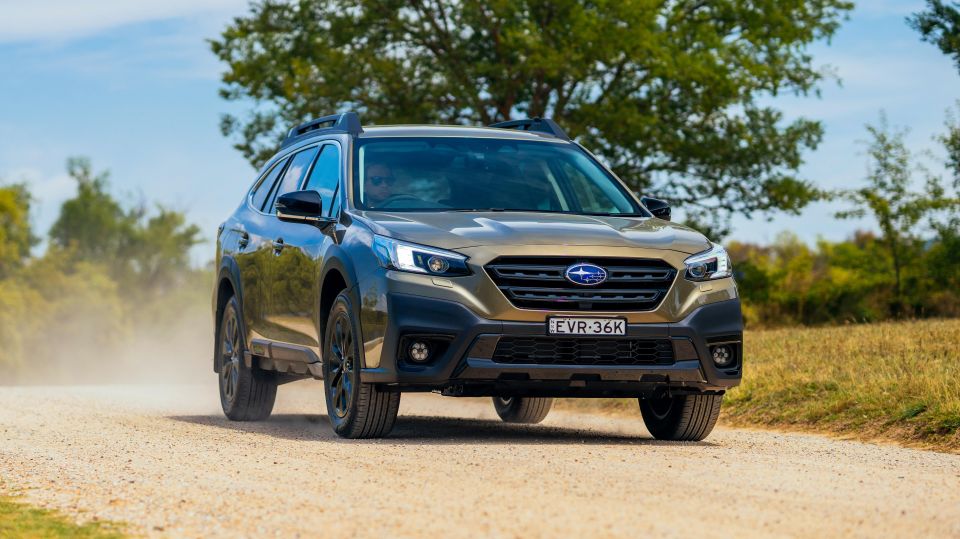
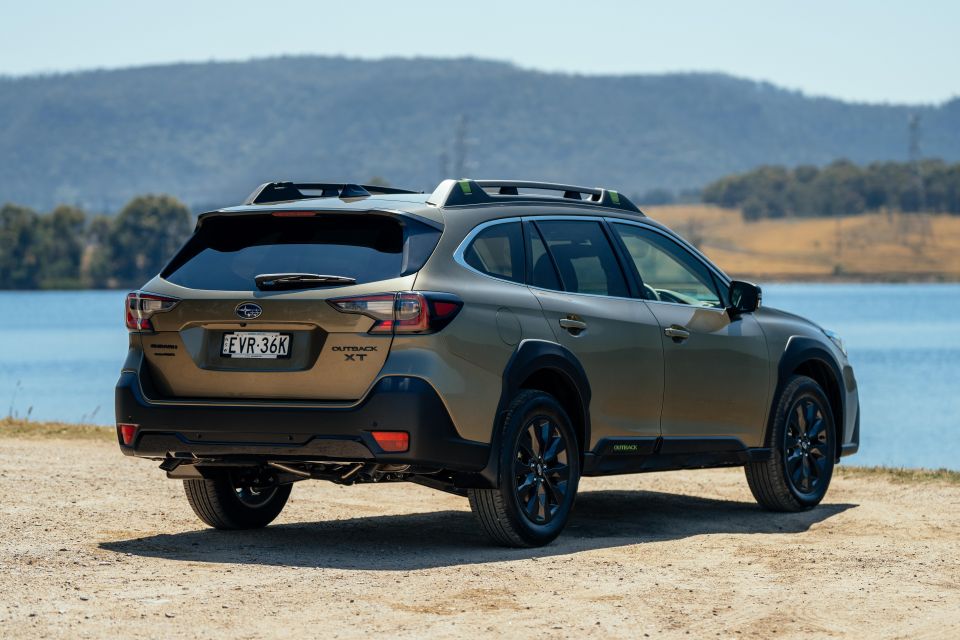

Quickly see how this car stacks up against its competition. Select any benchmark to see more details.
Where expert car reviews meet expert car buying – CarExpert gives you trusted advice, personalised service and real savings on your next new car.
Who said stations wagons were dead?

The Subaru Outback is Australia’s third best-selling SUV but, while it boasts generous ground clearance, it stylistically has more in common with the humble station wagon than a typical SUV.
While the days of V8-powered Commodore wagons are gone, the ubiquitous mid-sized and large SUVs – not to mention the few surviving wagons of this size – often offer a more powerful engine option.
The current, sixth-generation Outback didn’t offer such an option in Australia upon its launch in 2021. Though its predecessor had offered an available six-cylinder engine, not to mention a turbo-diesel four, the Outback was launched here exclusively with a naturally aspirated four-cylinder petrol engine.
A turbocharged engine was available in North America, but it didn’t make the trip… until now. The familiar XT nameplate is back, applied to Outback models with a new turbocharged 2.4-litre four-cylinder Boxer engine.
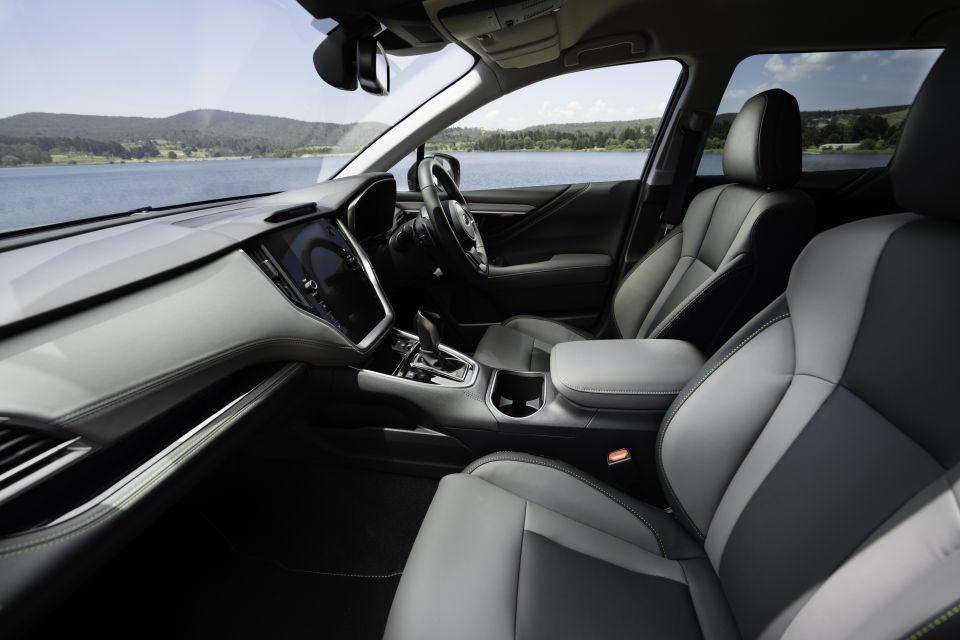
It’s available in both Sport and Touring grades, and is distinguished only by its badging, dual exhaust outlets and – blink and you’ll miss them – six LEDs in the fog lights. Subaru has resisted the temptation to fit anything larger than 18-inch alloy wheels which, for ride comfort and off-road ability, is probably for the best.
While the lack of an available, more powerful engine didn’t seem to hurt the Outback’s sales, the new turbo option is a welcome addition to the line-up. Subaru says it should help incrementally grow Outback sales; the old six accounted for 15-20 per cent of sales for the line, and Subaru expects the turbo-four’s share to be north of that.
Pricing for the new XT Turbo models starts from $52,190 for the Sport and $55,990 for the Touring, representing a $5000 premium over the equivalent 2.5-litre naturally-aspirated variant. Prices exclude on-road costs.
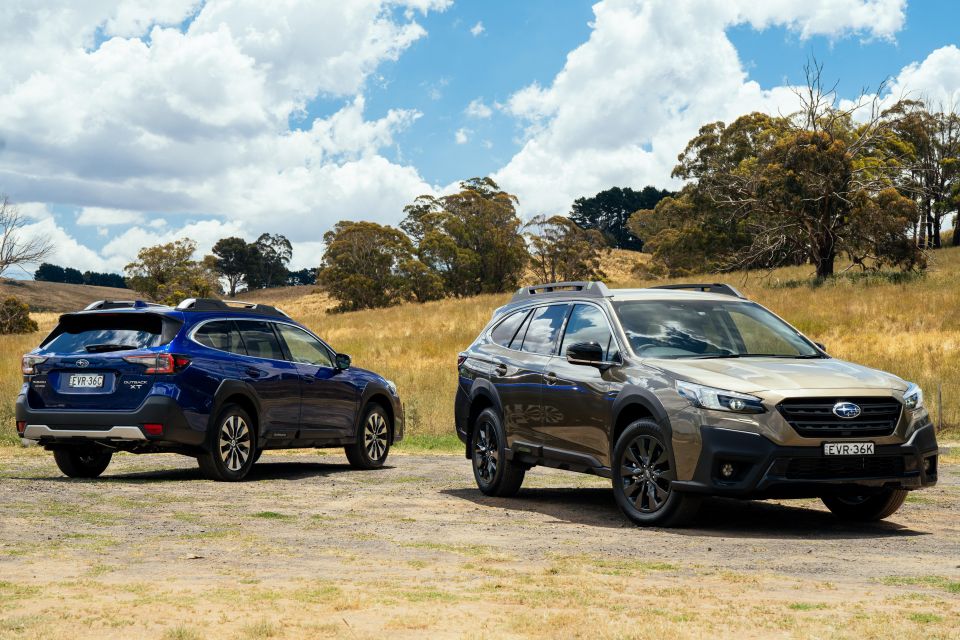
2023 Subaru Outback pricing:
All prices exclude on-road costs
The most obvious rival for the Outback is the Volkswagen Passat Alltrack, which follows a broadly similar formula. It’s priced at $50,790 before on-road costs in 162TSI guise and $62,790 before on-roads in 162TSI Premium trim.
You could also cross-shop the Outback with station wagons like the Mazda 6 and Skoda Superb, and crossovers like the Hyundai Santa Fe – it ultimately depends on what attributes are most important for you.
Buy your new car without the stress. It's fast, simple and completely free.

Great service from Travis and team, second time I have used this business would not hesitate to recommend them to anyone
Craig C.
Purchased a Ford Ranger in Sunshine Coast, QLD
CarExpert helped Craig save thousands on his Ford Ranger, now let us save you on your next new car.
Find a dealWe drove Sport and Touring models in both naturally-aspirated and turbocharged XT guises.
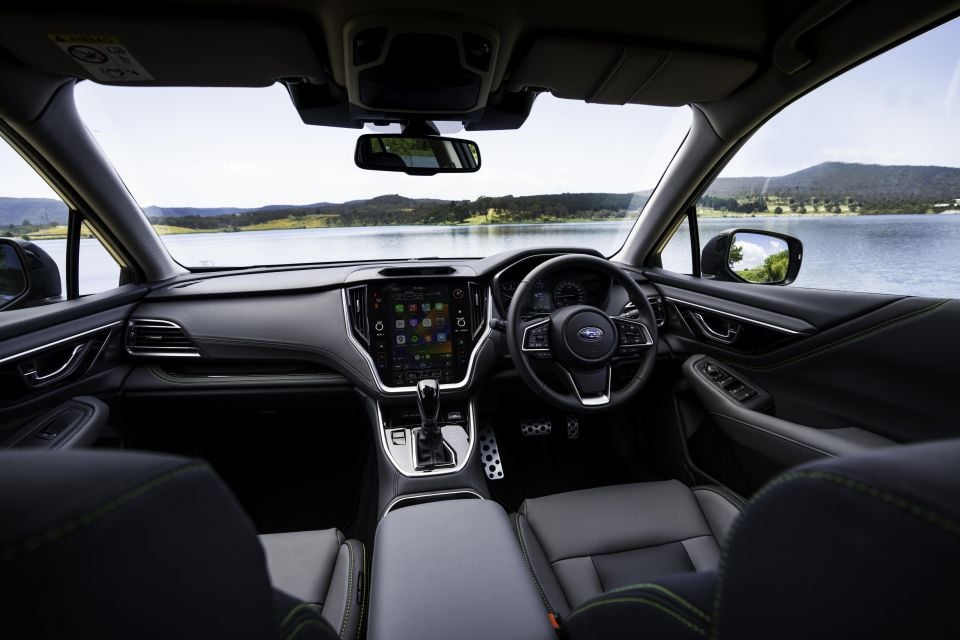
Regardless of the variant, the Outback has a smartly appointed cabin. The dashboard is dominated by a 11.4-inch portrait-oriented touchscreen infotainment system now featuring wireless smartphone mirroring.
At the base of the centre stack, a USB-C outlet replaces one of the USB-A outlets. There’s also a slightly cleaner steering wheel design for 2023, though in classic Subaru fashion it’s still swimming with buttons including those for selecting drive modes.
Material quality remains hard to fault. The door tops are finished in soft-touch trim as is much of the dash excluding the part above the centre stack and the lower reaches, and there’s welcome leatherette padding on the sides of the centre console.

Sport models feature unusual water repellent, synthetic leather upholstery. The seats are no less comfortable than the cushy leather-upholstered pews of the Touring, though they do feel somewhat odd to the touch.
There’s a good amount of cabin storage, including bottle holders in the doors that can fit 1L bottles, a well-sized centre console bin, a sunglass holder, and a handy rubberised shelf on the passenger side of the dash. There’s also a little niche underneath the USB outlets at the base of the centre stack, though it’s not quite large enough for most phones.
The infotainment system is generally quite responsive, and the large portrait display has allowed it to subsume much of the physical climate controls and yet keep them constantly visible. There are still handy hard buttons, however, for temperature control and de-misters.
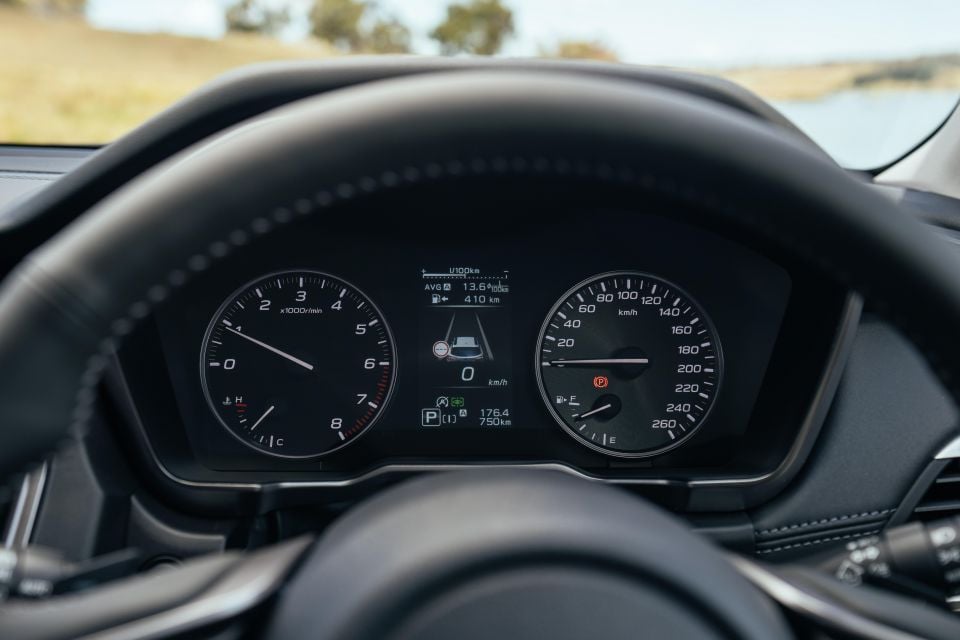
You can also use voice prompts to control a great many things, including the climate control, and the satellite navigation takes up a vast chunk of the screen, has a legible interface, and warns you of speed cameras.
The instrument cluster is less impressive. The 4.2-inch information screen is a bit too cluttered in appearance, with the speed limit lost among other similarly sized white text.
Step into the back and you can see why this is such a popular family wagon. The drive line hump is minimal so, while there’s not a completely flat floor, leg room isn’t compromised.
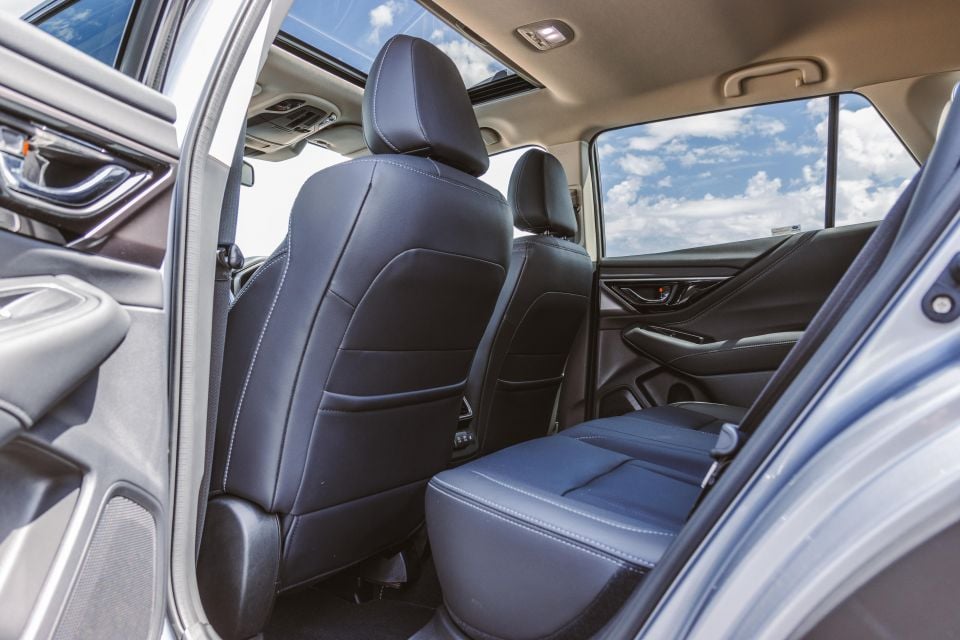
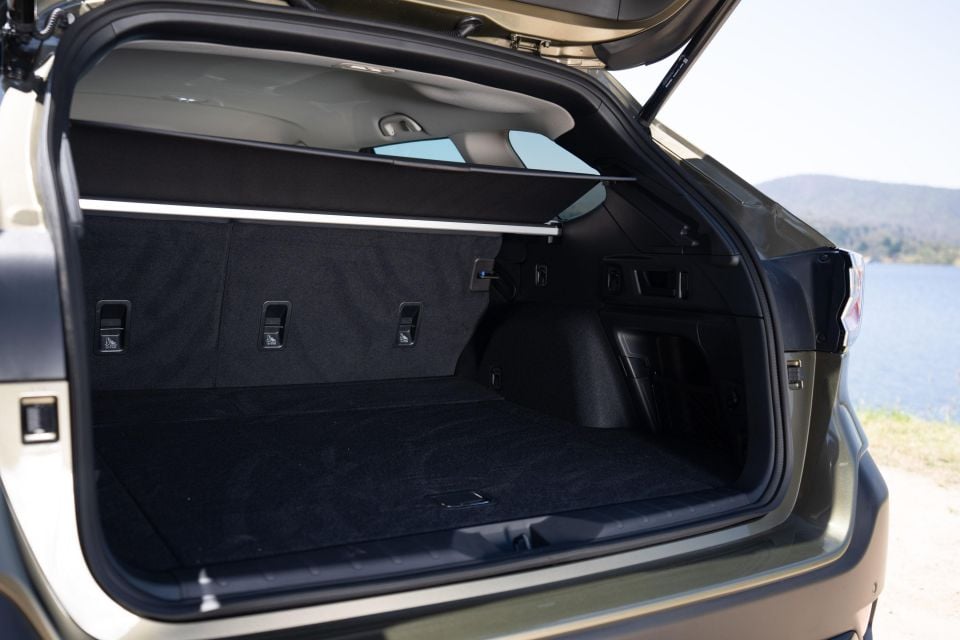
The rear bench is comfortable and supportive, and there’s plenty of room in every dimension even taking into account the slight intrusion from the Touring’s single-pane sunroof.
Material quality back here is good, too, and there are two USB-A outlets and a fold-down centre armrest. You’ll also find three top-tether and two outboard ISOFIX anchor points for child seats.
There’s 522L of boot space, expanding to 1267L with the rear seats folded. If measured to the ceiling, there’s 1783L of space in base and Sport models and 1711L in the Touring.
For 2023, the Outback’s standard 2.5-litre four-cylinder Boxer engine is unchanged. It produces 138kW of power at 5800rpm and 245Nm of torque between 3400 and 4600rpm.
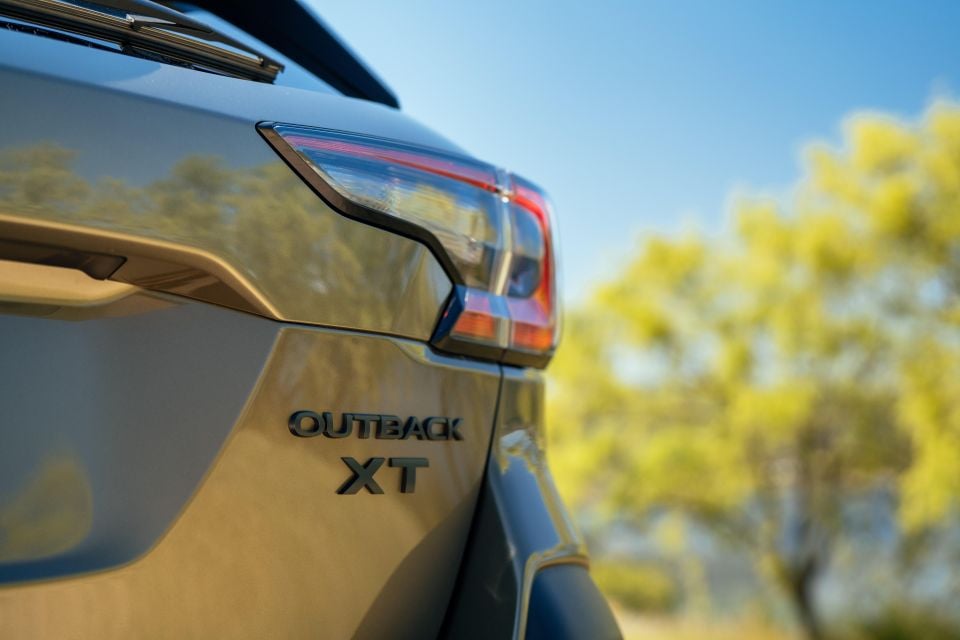
The Outback XT uses a version of the WRX’s2.4-litre turbocharged four-cylinder Boxer engine, bored out but with the same stroke. It produces 183kW of power between 5200 and 6000rpm and 350Nm of torque between 2000 and 4800rpm – identical in torque to the WRX, but with 19 fewer kilowatts.
For reference, the 3.6-litre six-cylinder engine in the previous generation Outback produced 191kW (at 6000rpm) and an identical 350Nm, albeit at a higher 4400rpm.
The old 2.0-litre turbo-diesel produced 110kW (at 3600rpm) and 350Nm (between 1600 and 2800rpm). The Outback’s key rival, the Volkswagen Passat Alltrack, produces 162kW and 350Nm from its 2.0-litre turbo four.
The XT uses a continuously variable transmission like the standard Outback’s engine, though it’s a different unit.
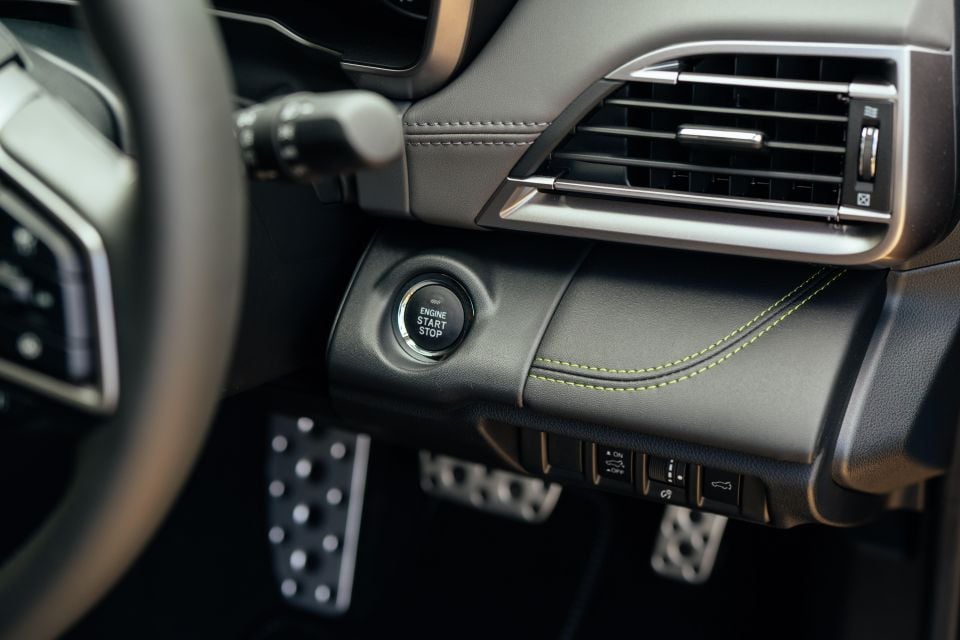
Braked towing capacity has been upgraded from 2000kg to 2400kg, the highest-ever figure for an Outback. Unbraked towing capacity is 750kg across the range.
While we weren’t able to take our testers on a loop more representative of typical combined cycle assessment, we did observe fuel economy of 8.8L/100km during one leg – mostly highway driving – with the atmo engine and 10.5L/100km on a similar albeit not identical leg with the turbo.
The official combined cycle claim is 7.3L/100km with the atmo engine and 9L/100km with the turbo. The latter is thriftier than the old six, but not by much – the 3.6 had a combined cycle claim of 9.9L/100km.
Subaru provided both the atmo and turbo engines for evaluation on the launch, which gave us a chance to reacquaint ourselves with the standard engine.
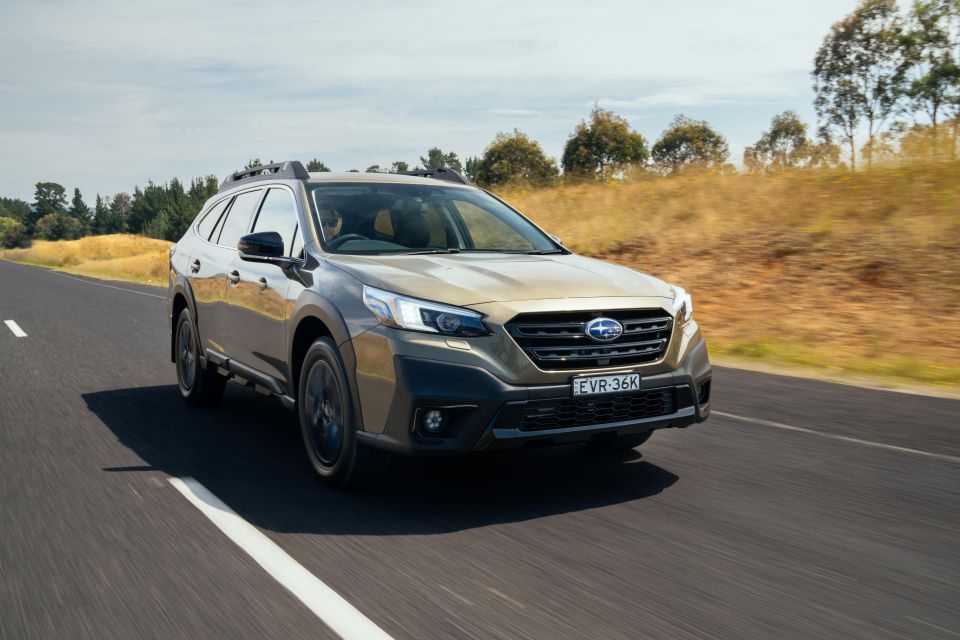
In urban driving, the atmo engine seems willing enough, with the CVT helping to get the most out of the engine. The transmission also avoids the worst of the rubber-band-style, droning operation of some CVTs, with programmed steps to mimic a conventional automatic.
Take it anywhere with a steeper grade, however, and the atmo Outback runs out of puff. It feels laboured climbing hills, and you’ll sometimes find yourself with your foot planted to the floor. Consequently, the Boxer engine can get rather raucous.
If that’s how it feels with one average-sized human aboard, one can imagine what it would feel with a whole family and their stuff.
Getting into the turbocharged XT is a breath of fresh air. Quite simply, the new engine gives the Outback the power it should have had all along.
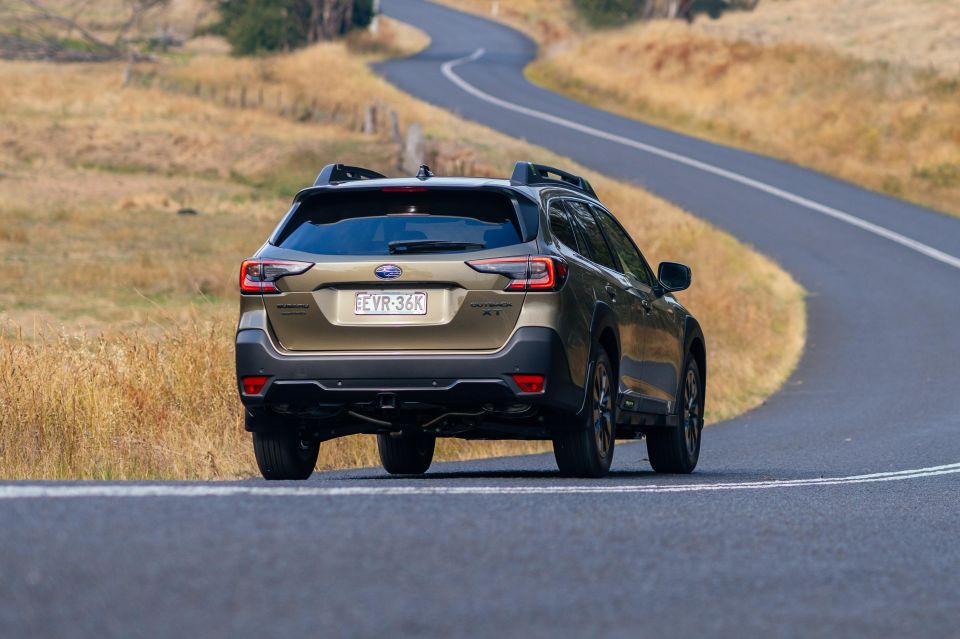
It doesn’t feel like a rocketship, but there’s effortless thrust from lower in the rev range. You don’t have to work this engine as hard, and consequently it feels much more refined. Hills are ascended without complaint, and the extra power makes this an even better long-distance tourer.
Apart from the different powertrain – admittedly a pretty key difference – the Outback XT is largely unchanged mechanically. The dampers and front springs have been retuned to account for the turbo’s superior towing capacity, but you would be hard-pressed to tell the difference between the two dynamically apart from in power delivery.
Regardless of what’s under the bonnet, the Outback feels poised and planted, though never overly sporty. The steering could do with a bit more weight and feel, and activating Sport mode doesn’t help matters. Despite this, it avoids feeling vacant and overly light, and it’s very easy to manoeuvre this relatively large vehicle.
Ride comfort and body control are superb. We drove the Outback on rural roads last resurfaced when Keating was in Kirribilli, and it glided over ruts and imperfections with aplomb. It feels nicely tied down, without any untoward float.
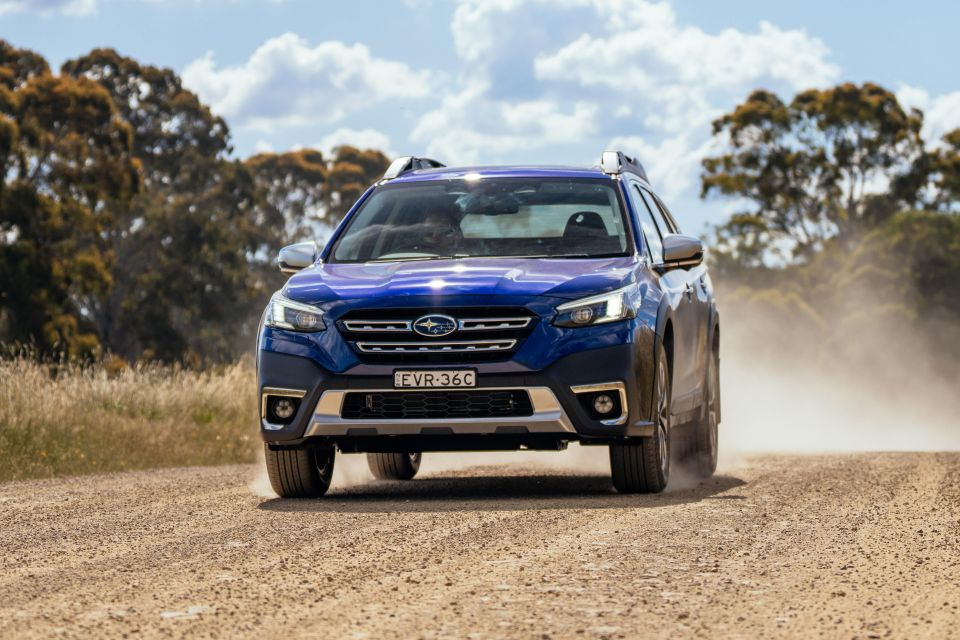
We should note, however, that we observed some of the testers on hand had their tyres inflated to upwards of 47psi.
On the highway, the combination of adaptive cruise control and lane centring function gives the Outback quite competitive level 2 autonomous driving smarts. Other commendable inclusions include a leading vehicle departure alert, should you not notice the vehicle ahead of you is on the move.
There’s a little bit of wind whistle at highway speeds, but otherwise the Outback proves quite quiet. At 110km/h, we were sitting at 2000rpm in the XT and the cabin was a serene place to be.
The launch program also included some light off-roading to demonstrate the capability of the Outback and its X-Mode.
Despite the rustic name, you might not think of the Outback as something you would take off-road. While we wouldn’t use it to scale Kilimanjaro, it has a competitive 213mm of ground clearance – 40mm more than a Passat Alltrack – and off-road modes that are capable and easy to use.
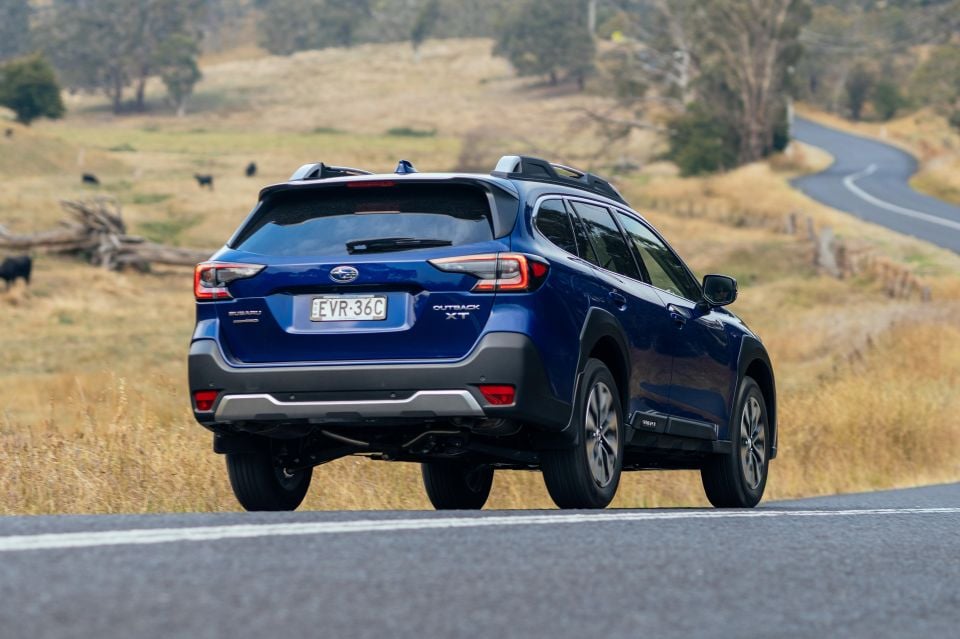
Where expert car reviews meet expert car buying – CarExpert gives you trusted advice, personalised service and real savings on your next new car.
Available at speeds below 40km/h, there are two X-Modes: one for snow and dirt that reduces power and maximises traction, the other for deep snow and mud that gives you maximum power and turns off traction control to help you get out of sticky situations. You can toggle between these modes easily at the top of the touchscreen.
A fairly intuitive hill descent control is present, controlled via the brake and accelerator pedals and working at speeds of up to 20km/h.
For 2023, X-Mode receives a self-resume mode, saving you from pressing a button when you return to its operating speed.
X-Mode uses the Outback’s Vehicle Dynamics Control system and the ABS module to act as a limited-slip differential. The Outback features active torque vectoring, with each individual wheel capable of being braked.
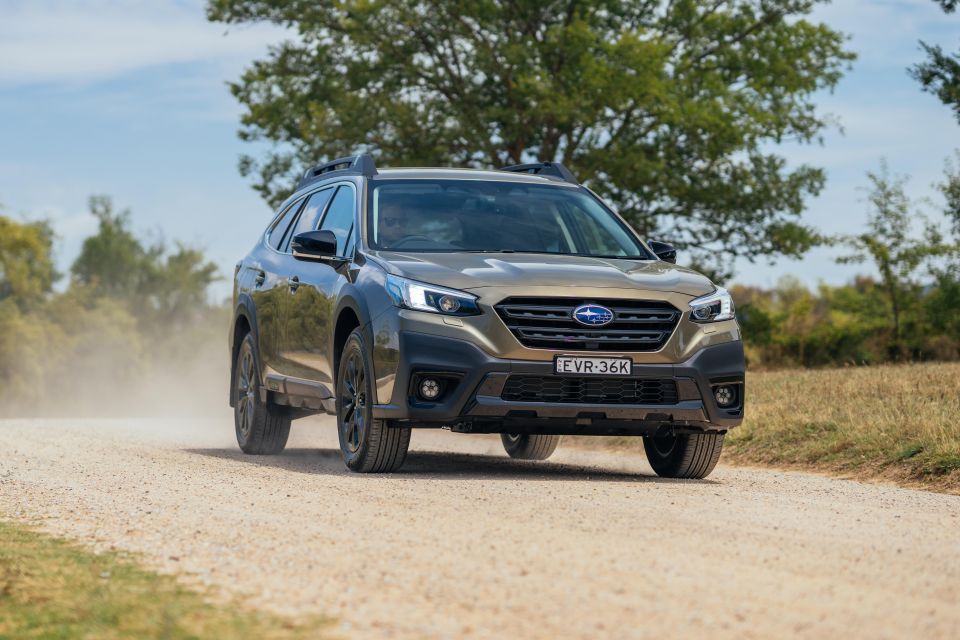
We observed on one tougher hill climb just how X-Mode could help. The Outback in front had one wheel sticking in the air, spinning with reckless abandon. When the driver engaged X-Mode, power was redistributed and the car could continue up the hill unabated.
Back on the (rural) road, we found the LED headlights to offer competitive illumination, though the automatic high-beam proved dim-witted at times.
For 2023, you can now add a shortcut button to the infotainment home page for the auto hold function instead of burrowing through sub-menus.
Likewise, you can add a shortcut for the automatic stop/start system which ultimately is less annoying than in some brands, with a calibration that’s overall quite smooth.
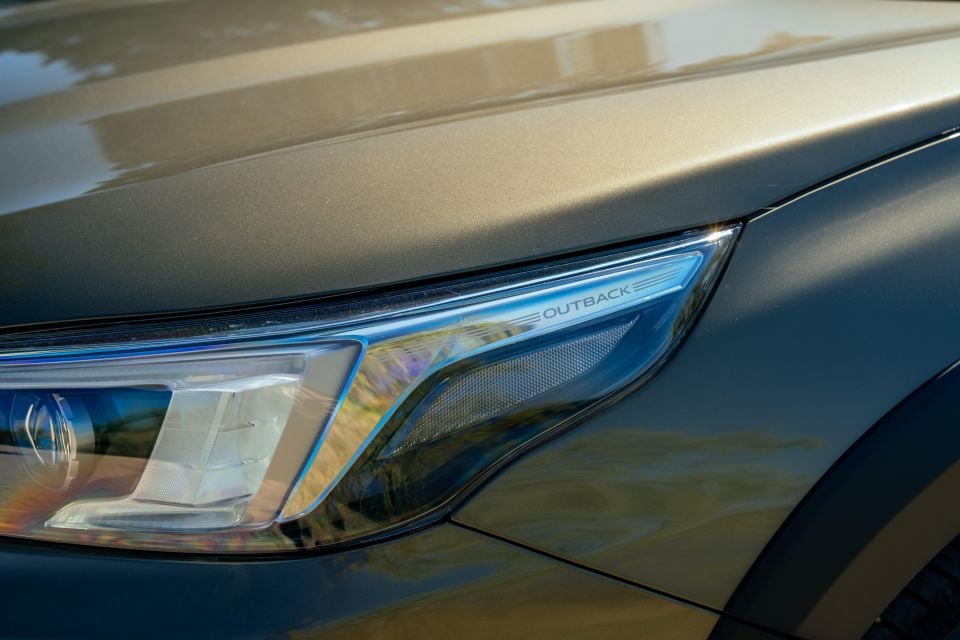

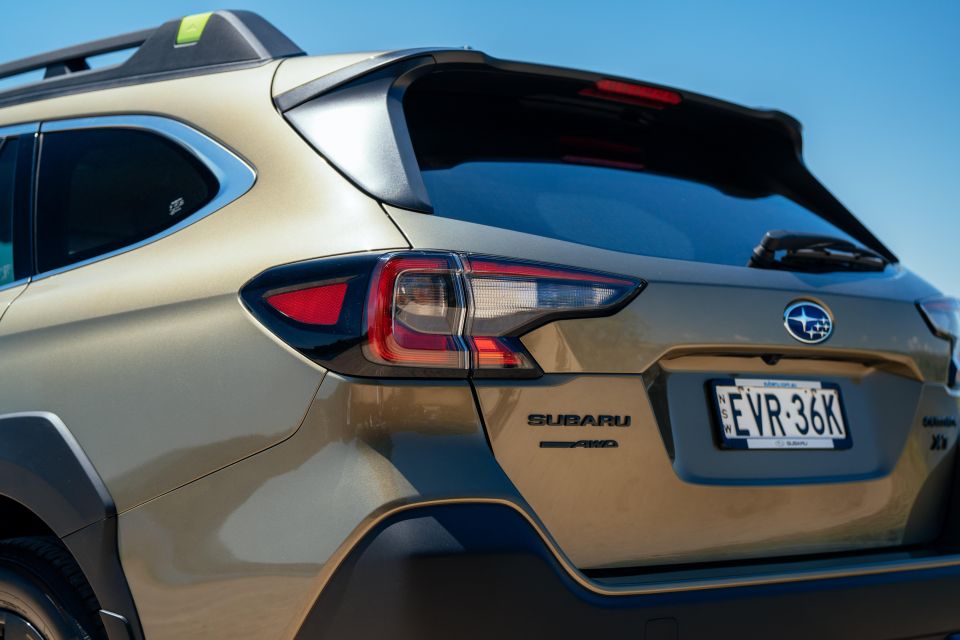
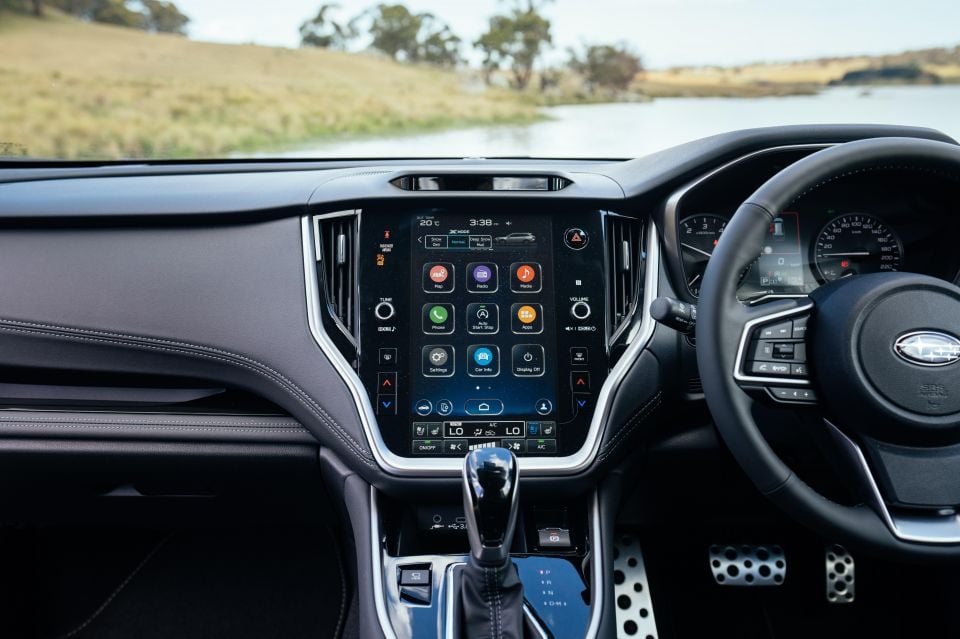
Outback AWD highlights:
Outback AWD Sport, AWD Sport XT add:
Outback AWD Touring, AWD Touring XT add:
The Subaru Outback has a five-star ANCAP safety rating, based on testing conducted in 2021.
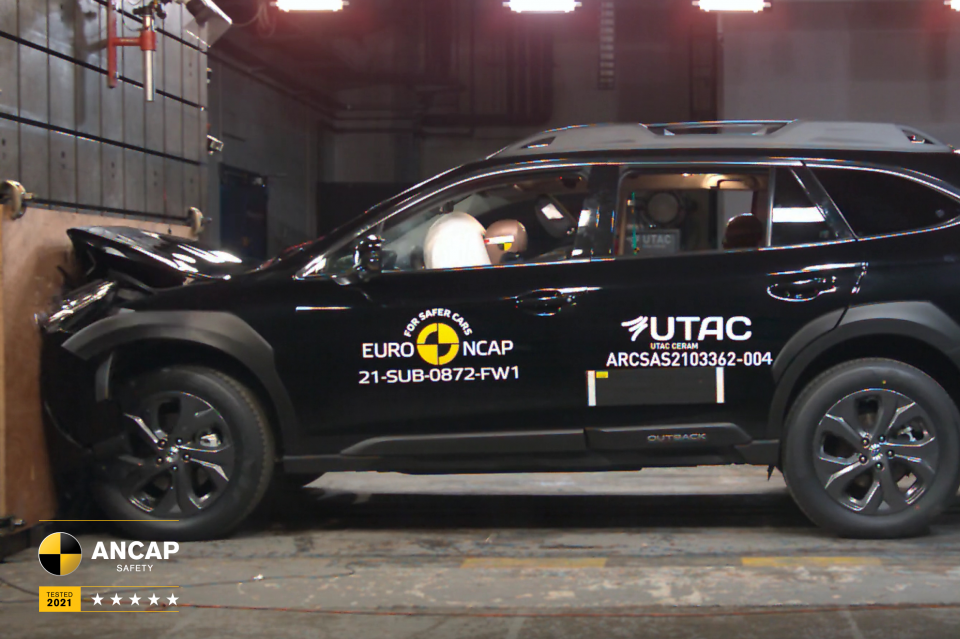
It received an adult occupant protection score of 88 per cent, a child occupant protection score of 91 per cent, a vulnerable road user protection score of 84 per cent, and a safety assist score of 96 per cent.
Standard safety equipment includes:
The Outback is backed by a five-year, unlimited-kilometre warranty with 12 months of complimentary roadside assistance.

The Outback requires servicing every 12 months or 12,500km, whichever comes first.
The first five services are capped at $370,91, $636.98, $379.36, $888.62 and $398.77 with the base engine, or $2674.64 over five years.
In XT models, these are capped at $376.61, $518.40, $460.15, $819.68 and $404.47, or $2579.31 in total. Yes, the turbo is actually cheaper to service, and both are cheaper to service over five years than a Passat Alltrack ($2800).
We’ve been waiting for this turbocharged engine for some time, and it didn’t disappoint.

Subaru hasn’t engineered some kind of STI-like sports wagon here, but it’s given the Outback a welcome shot in the arm. There’s now far more grunt on tap here, ideal for when you’ve loaded up your Subie with the family and all their stuff.
With a more powerful mill under the bonnet, the Outback XT is also both more flexible and more refined in its power delivery. It’s a shame the premium for the engine is so steep at $5000 as, having driven the XT now, it would be hard to go back to the atmo four.
The base engine remains rather underwhelming, though the Outback still has plenty of dynamic strong suits with the atmo four under the bonnet – chiefly, a supple ride and balanced handling, as well as a decent amount of off-road ability.
The whole Outback range also enjoys a spacious, comfortable and well-finished interior. It’s clear why the current Outback has proved such a popular model, even if until now it didn’t have quite enough vim and vigour.

Click the images for the full gallery
Where expert car reviews meet expert car buying – CarExpert gives you trusted advice, personalised service and real savings on your next new car.
William Stopford is an automotive journalist with a passion for mainstream cars, automotive history and overseas auto markets.


Damion Smy
16 Hours Ago


Josh Nevett
4 Days Ago


CarExpert.com.au
5 Days Ago


Damion Smy
7 Days Ago


Derek Fung
7 Days Ago


Ben Zachariah
10 Days Ago